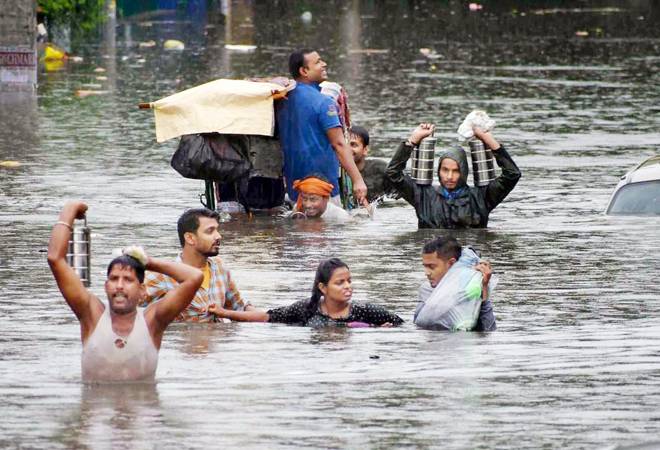
Several villages in Nepal and north Bihar were flooded after 3-4 days of early monsoon rainfall in the catchment basins of the Gandak and Burhi Gandak rivers. West Champaran, East Champaran, Gopalganj, and Muzaffarpur are among the districts affected.
Due to the recent rainfall, several rivers such as the Bagmati, Koshi, Kamla Balan, Bhuthi Balan, and Ghaghara are overflowing. The Gandak’s swelling waves have wiped away roads, bridges, and are threatening embankments. According to the Bihar Water Resources Department (WRD) website, the Gandak was flowing above the danger line in a few areas on June 16 and 17.
The management was forced to open all 36 sluice gates of the Gandak Barrage at Valmiki Nagar on June 16 to discharge 4.12 lakh cusecs of water due to the rising Gandak. The outflow from the Gandak Barrage, on the other hand, had dropped below 3 lakh cusecs on June 17.
Several towns in the West Champaran region have been submerged with 2-3 feet of floodwater, including Bagaha, Bettiah, and Narkatiaganj. Residents of West Champaran’s Gauripur Manjharia village claimed they never expected so much rain so soon after the monsoon arrived.
They claimed that they had not adequately prepared for the flood.
The floodwaters had engulfed their village.
They were completely blocked off because the roads had washed away. However, no government officials had travelled this far to assist them. According to government data, considerable rain has fallen in several areas of West Champaran in recent days.
Lauriya (200 mm), Valmiki Nagar (170 mm), and Hahaha are among them (100 mm). After entering Bihar on June 12, officials at the India Meteorological Department’s (IMD) Patna meteorological centre claimed the state has seen a widespread and active monsoon.
The state administration has issued flood warnings to district magistrates in at least nine districts, including Siwan, Saran, and Madhubani. 16 teams of the National and State Disaster Relief Force have been dispatched in high-risk areas, according to Vijay Sinha, NDRF commandant in Patna.
The WRD’s most recent update stated that all embankments were safe and that there was no need to be concerned.
Chief Minister Nitish Kumar convened a high-level review meeting through video conference two days ago. He had instructed the district magistrates of West Champaran, East Champaran, and Gopalganj to be on high alert and keep an eye on the Gandak’s growing water levels.
The state is no used to floods, but the amount of rain it received just a week after the monsoon arrived caught them off guard. After a wetter-than-normal monsoon arrived in Bihar at the correct time last year, the state received an abundance of rain.
Bihar receives 1,027.6 mm of rainfall in a normal monsoon year, according to IMD’s yearly rainfall data; the average annual rainfall throughout the year in all seasons is 1,205.6 mm. Bihar, according to the World Resources Institute, is the most flood-affected state in the country, accounting for over 17.2% of the total flood-prone territory.








